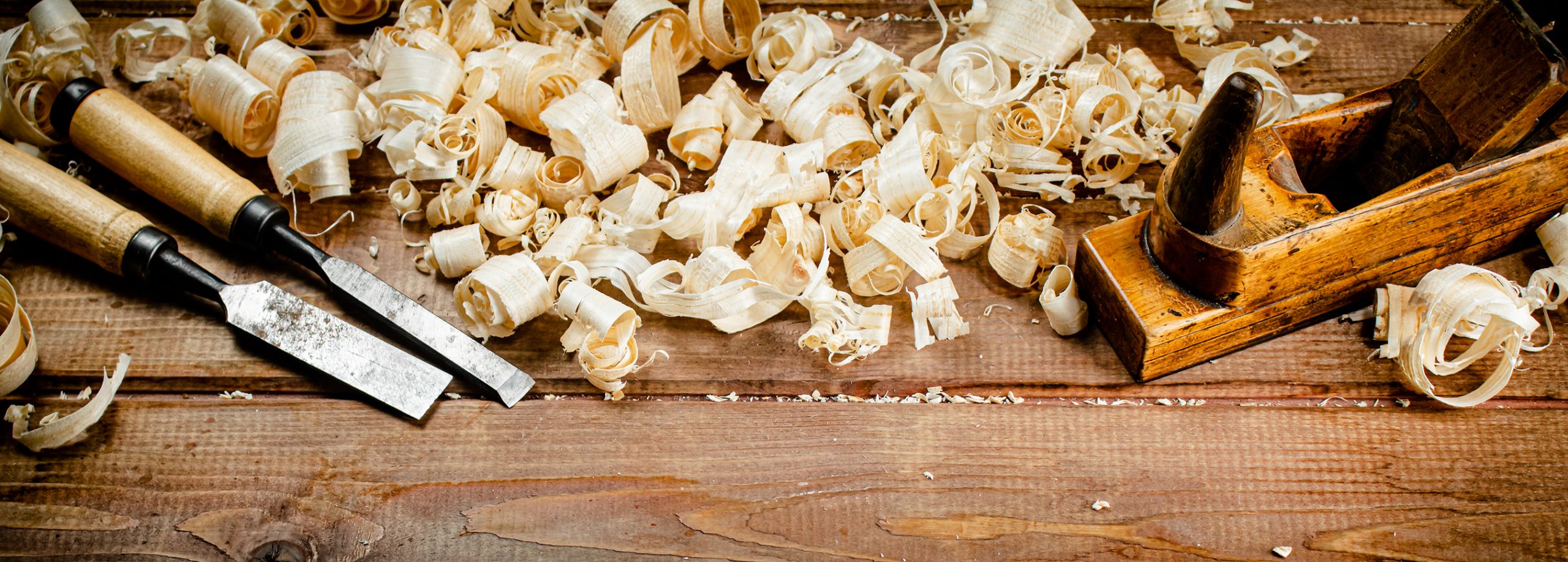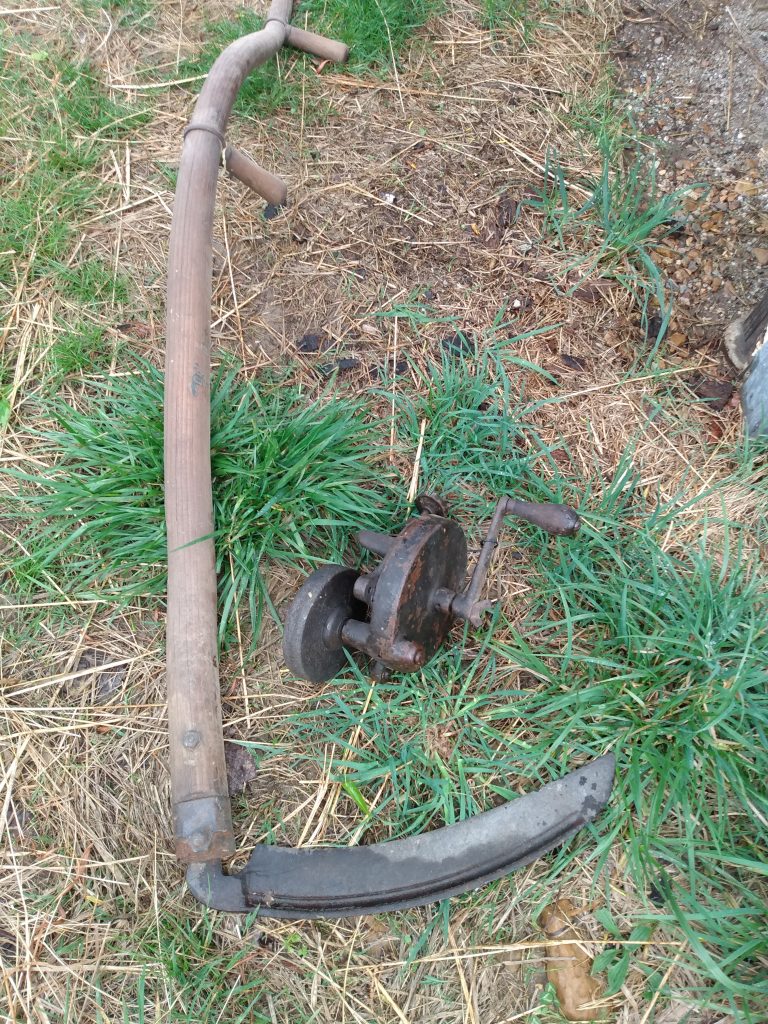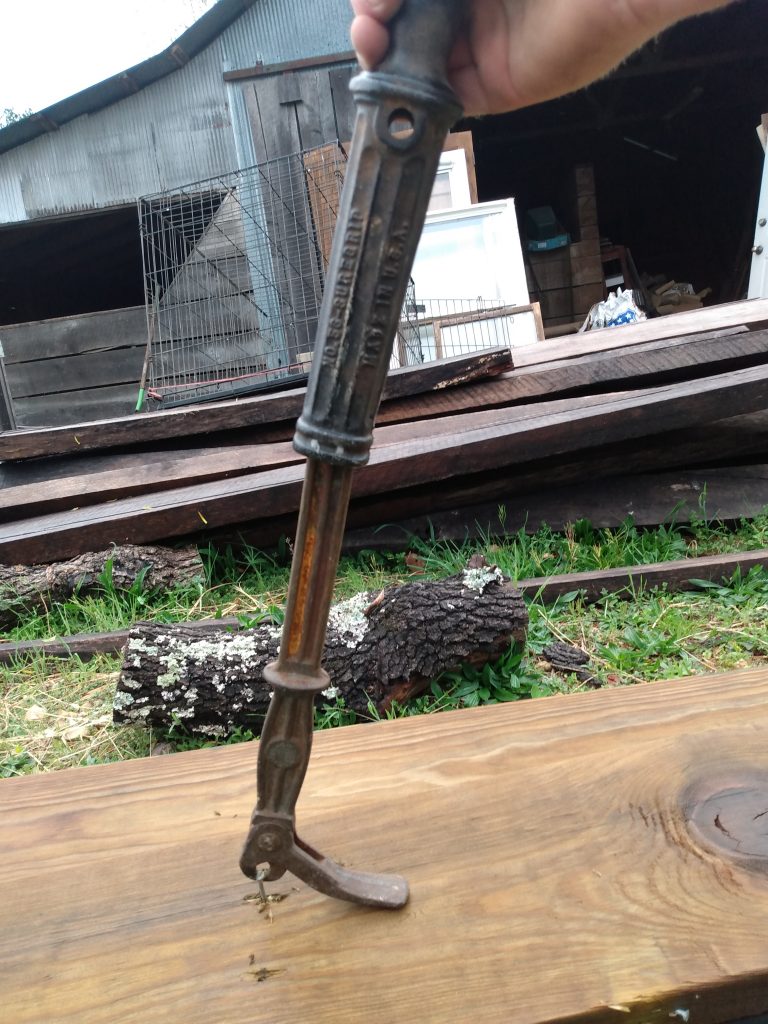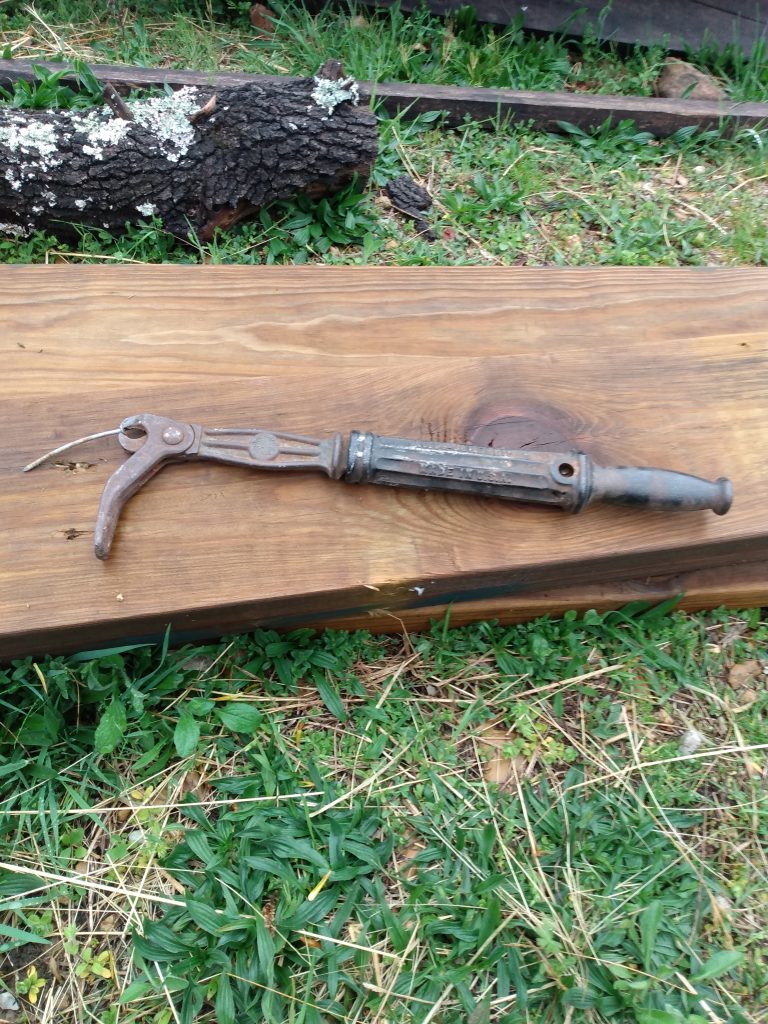Lifestyle
Antiquing. Not just for Subaru drivers.
If you don’t have a plan or specific goal in mind, you may find yourself walking out several hundred dollars poorer, with a few marginally decent tools and a box full of your favorite childhood toys.

By: Woodworking Gunny Bear
If you are planning on attending this year’s festival here in Missouri, you may want to set a day aside to hit some of our massive antique malls. I know what you may be thinking, “But Gunny, I don’t even own a Subaru.” As a homesteader and part-time prepper, I am always on the lookout for things that can be useful when the power goes out or supply chains falter. Over the years, I have amassed a wide variety of tools, gadgets, and containers from the many antique malls here in Missouri.
One thing I learned early on is that walking into a huge antique mall, packed to the gills with extremely cool (often nostalgia-evoking) stuff, can be overwhelming. If you don’t have a plan or specific goal in mind, you may find yourself walking out several hundred dollars poorer, with a few marginally decent tools and a box full of your favorite childhood toys. This article is not intended for those who want to “flip” items for profit. If, however, you are looking to score a good deal on a well-made and useful tool, then you might find it a worthwhile read.
My wife and I enjoy perusing the many antique malls and shops here in Missouri. We enjoy the nostalgia. We also appreciate the craftsmanship and design of “old stuff.” We have also developed a bit of a system to ensure that we don’t: overspend on a given item, purchase an item that has a better (and often cheaper) modern version, or walk out with a very cool-looking piece of junk.
There are several things to consider prior to walking into an antique shop or mall:
What, specifically, are you looking for? Do you want to pick up some hand tools for the wood shop? A few things to improve production on the homestead? How about some kitchen gadgets that will remain useful in a power outage?
How much are you willing to spend? Is an expensive item worth it if it will likely sit in your basement for the foreseeable future?
Are you capable of recognizing when an item is damaged, broken, or missing parts? If so, can it be brought up to snuff without a significant effort or investment?
What happens if I see something that transports me back to “the good old days” but has no actual function?
I will attempt to address all of these considerations, as well as drop a few tips and tricks which you may find useful.
My wife and I really enjoy looking at all of the cool stuff in our local antique malls, but we both know that some things are for looking at, and some things are for buying. For example, as a woodworker, I am always on the lookout for quality woodworking tools that don’t require electricity as a power source. Early on, I wanted to grab every hand drill, planer, and axe I saw. Eventually, I learned that all classic tools were not created equal and that the cheap hand plane was cheap for a good reason. My wife, on the other hand, tends to gravitate toward kitchen and household-related items. Hand-cranked mixers, beaters, meat grinders, etc., are her jam. She is also quick to buy crocks for pickling and fermenting. She has a nice washboard and is currently on the lookout for a very specific hand-operated washing machine.
It is always a good idea to set a budget before your first safari into the wilds of an antique jungle. This can keep you from buying that completely useless (but very cool looking) WW2 helmet or nudge you along to the next booth where the same item is a bit cheaper…and in even better condition! Many antique malls have a booth-style setup where different sellers display their wares. Some sellers price their items based on antique price guides, while others just want to get rid of stuff that they found in their grandparent’s attic. Needless to say, prices and item conditions can vary wildly. A good rule of thumb is that smaller, boutique-style shops tend to have higher prices but often sell quality items in pristine condition. Large, mall-style antique shops tend to have a much wider variety and lower prices but can be littered with damaged, broken, or lower-quality items. With patience and self-control, we have found that we prefer the larger shops and have gotten some great deals on well-made, useful tools in excellent condition. We have made a handful of relatively expensive purchases but were not disappointed. For example, my wife spent almost $50 on a hand-operated meat slicer. We were swayed because it was a rare find, was in excellent condition, and could often go for $80 and up. Similarly, I have always wanted a really nice scythe. I finally found one, but the seller wanted over $100 for it. I was really close to buying it, but I couldn’t bring myself to break that three-digit threshold for something that I might never actually use.
I finally decided to pass on the purchase. A month or so later, I found an even nicer one for only $45. Patience and frugality had again paid off. I now own two beautiful scythes and still haven’t broken that three-digit threshold. Bonus tip: Many antique mall owners charge a booth fee and make a small percentage on each sale. Often, they will contact individual sellers and convey a counteroffer in order to facilitate a sale.

As mentioned earlier, antiques can be in widely varying states of condition. I can’t count the number of times that I got worked up upon seeing a given tool, only to completely deflate as soon as I looked at it up close. Being able to assess an item’s condition is an important skill. Anything with moving parts should function smoothly, with no catching or grinding. Rust can often be an issue as well. A thin layer of rust can be removed with some mineral oil and elbow grease while soaking in vinegar can remove heavier rust layers. Items that are rusted to the point of pitting or flaking should usually be avoided. We bought several items only to later find that a key component was missing. A good practice is to grab a given item (be sure to remember which booth you took it from) and keep an eye out for the same or similar thing. If you find another one, compare the two. You can often identify a missing or damaged part, and very often, the one in better condition will be similar in price or even cheaper. Another thing to keep in mind is that some sellers will attempt to hide the damage. I once found a froe axe, which is used to turn round logs into square beams, marked as $10. This was a great price, and those particular axes are quite a rare find. It appeared to be in great condition but needed a good sharpening. Luckily, I knew to carefully examine the axe head (handles are easily replaced) because the seller had laid on a thin layer of paint in an attempt to hide a hairline crack in the steel. I hung it back up and moved on.
Another dangerous pitfall is the nearly constant feeling of nostalgia. It’s hard enough to keep walking when you happen upon the same bread box you remember from your childhood home. I have even wanted to drop a few bucks on an old metal saltine canister or glass Aunt Jemima syrup bottle. It’s another thing entirely when you round a corner and find yourself face-to-face with that favorite childhood toy. Antique shops are littered with vintage GI Joes, Voltron lions, Star Wars figures, etc. I even found a big bag full of original He-man toys that appeared to be comprised of the exact same collection that I owned as a child. Trust me when I say that the nostalgia will wear off quickly. Enjoy the memories and move on. If you just can’t pass by without making a nostalgia purchase, set a price limit. Remember that many vintage items are overpriced and aren’t nearly as rare as you might think.
A key component of our strategy is a very modern tool, the smartphone. Be sure to have yours handy, as it can be helpful when it comes to avoiding several of the aforementioned pitfalls. I am no fan of modern cell phones, but I would be lying if I said that they are not useful tools, especially when buying antiques. We always look up items before checkout, ensuring that the price is at or below the average. We also come across things and think, what the heck is that?” Many times a patent number entered in the search bar assists in its identification. That was how I discovered one of my favorite tools, a slide hammer nail puller. It is a truly excellent tool, and I had no idea what the heck it was until I looked it up. Very often, there is a better, less expensive version of a given tool or gadget. For instance, we were about to buy a glass butter churn for $50. It was in great shape, and that was a pretty good price. When we were doing our price check, we discovered that a company makes a modern version that has plastic paddles (easier to keep clean) and is cheaper to boot. When used correctly, modern phones can be extremely handy.


There are many more tips and pieces of advice when hunting for bargain barn finds, but part of the fun is discovering them for yourself. Just remember to have a plan, and most of all, have fun. You may discover that gadget or tool that is as useful today as it was when your grandparents ordered it from the Sears catalog decades ago.

Social media shows doomsayers, pessimists, and even truther-prepper types blasting out warnings of impending doom and gloom. You may feel the urge to fight if you can bear this without your emotions causing you to flee or freeze.
But what does fighting for your future mean? Unfortunately, much internet commentary directs your focus to what others are doing and how they affect you, calling for action to demand change. While this may have its place, it neglects the freedom we already possess and can inadvertently bypass our authority and control.
Here are a few simple things to think about that can help you fight against the future you don’t want, by building the future you do want.
Financial Future
Securing your financial stability is the cornerstone of building a successful future. This starts with becoming debt-free. Debt is a shackle that limits your freedom and ties you to a system you might not align with. Aim to clear your debts quickly and avoid taking on new ones.
Next, focus on land ownership. Owning land provides a place to call home and offers opportunities for self-sufficiency, such as gardening, raising livestock, or even setting up a small business. This autonomy can buffer against economic uncertainties and offer a sense of security.
Continually work towards a sustainable income. Whether through traditional employment, investments, freelancing, or entrepreneurial ventures, ensure your income sources are diversified and resilient to economic shifts. Build skills that are in demand and can be adapted to various roles. Financial independence is crucial in crafting a future you control rather than one external force dictates.
Education
Education is the foundation of personal and professional growth. Embrace self-study and continuous learning. The more skills and knowledge you acquire, the more adaptable you become in a rapidly changing world. Invest in personal improvement by setting aside time for reading, courses, and practical skill-building.
Homeschooling is another powerful tool. It allows you to tailor education to your family’s needs and values, ensuring your children learn what truly matters. Foster a love of learning in your household, emphasizing critical thinking, creativity, and practical skills over rote memorization.
Family Protection
Protecting your family goes beyond physical safety; it involves being a guiding force and a source of stability. We must also protect our families from negative and misguided influences. Be a leader to your children by setting a positive example. Teach them resilience, self-reliance, and the importance of moral values. Strengthen bonds with your siblings through support and cooperation, creating a solid familial network.
Honoring your seniors is equally essential. They possess invaluable wisdom and experience. Encourage intergenerational communication and respect, ensuring your family’s heritage and lessons are passed down.
Mindset
Your mindset is the driving force behind every action. Take ownership of your life and decisions, understanding that responsibility and accountability are keys to freedom. Respect your time and finances, recognizing them as finite resources that require careful management.
Develop a mindset of resilience and adaptability. Life is unpredictable, and being mentally prepared for challenges ensures you can face them head-on. Cultivate a positive outlook, focusing on solutions rather than problems. This proactive attitude will guide you in building the life you want.
Community Building
No one succeeds alone. Connect with people who share your values and vision. Building a community of like-minded individuals offers support, shared resources, and collective wisdom. Engage in activities and friendships that bring joy and complement your life.
We would like to take it a step further by saying, we don’t build the future we want as a reaction to the future we don’t want. We build, because we love, its fun and fulfilling. Our fight is to thrive, not to survive. Survival is a consequence of thriving. So aim high! Take control of your life, embrace self-responsibility, and connect with others on the same path.
Those looking to connect with a broader network should consider joining our Community app. It’s a platform dedicated to bringing together individuals who strive for independence. Whether you’re looking for advice, collaboration, or simply companionship on your journey, our thriving community is a valuable resource.
The power to shape your future is in your hands.
Lifestyle
Making Pine Needle Soda: A Fantastic Foraged Beverage
Pine needle soda, a truly one-of-a-kind beverage, has been savored worldwide for its zesty taste and health benefits.

Pine needle soda, a truly one-of-a-kind beverage, has been savored worldwide for its zesty taste and health benefits. It’s not just a refreshing drink, but also a creative use of natural ingredients. Here’s a simple guide to crafting this unique soda at home.
Pine needles are rich in antioxidants and vitamin C, which help boost the immune system. Different species of needles can offer different flavors, but it’s important to make sure the trees you harvest from are not toxic. Avoid using needles from yew, Norfolk Island pine, or Ponderosa pine. You should do additional research to insure you are staying safe.
The recipe I followed is easy and only requires a jar, strainer, and measuring cups. Start by identifying the pine tree you would like to harvest from; I used fir, tamarack, and white pine. Again, make sure you don’t use anything unsafe. You can choose to use new sprouted tips or even mature needles, which means you can also have fresh pine soda in the winter months!
You can scale up the recipe, but for reference, use the following:
- 2 Cups Pine needles
- 2 Cups Water
- 2-4 Tablespoons sugar (depending on sweetness you desire)
For the above measurements, I recommend using a quart jar. Begin by rinsing the needles, not too thoroughly, because the carbonation comes from natural yeast living on the pine needles. Add the sugar and water and seal the jar. Leave to ferment so it can become bubbly soda! Make sure to “burp” the jar every couple of days to release some of the gas so it does not build up and explode the jar! In 5-7 days, you will have soda, God willing.
Serve over ice and with some citrus if you’d like. Enjoy!
Lifestyle
Reconnect and Rejoice: Beartaria Times Weekly Challenge
Maintaining solid relationships with family and friends offers numerous benefits that enrich our lives in meaningful ways…

In our fast-paced world, losing touch with friends and family members who once played significant roles in our lives is easy. This week, the Beartaria Times invites you to participate in our heartwarming challenge: Reconnect with someone you haven’t spoken to in a while. Give them a call, ask how they’ve been, and rekindle that bond.
Maintaining solid relationships with family and friends offers numerous benefits that enrich our lives in meaningful ways:
1. Emotional Support: Close relationships provide a robust support system during tough times, offering comfort, advice, and a sense of belonging.
2. Improved Mental Health: Regular interactions with loved ones reduces feelings of loneliness and depression, contributing to mental well-being.
3. Increased Longevity: Studies have shown that strong social connections tend to help people live longer and enjoy better health.
4. Enhanced Happiness: Sharing moments, memories, and experiences with others brings joy and fulfillment, fostering a more positive outlook on life.
5. Personal Growth: Friends and family often challenge us to grow, learn, and become better versions of ourselves.
6. Creating Memories: Every interaction creates new memories, adding richness to our personal histories and offering stories to cherish for years to come.
We encourage you to take this challenge to heart and reach out to someone you miss. Whether it’s a friend from high school, a distant relative, or a former colleague, a simple phone call can reignite connections and brighten your day and theirs.
Once you’ve reconnected, share your stories and experiences on the Beartaria Times community app. Post about who you called, the memories you shared, and how the conversation went. Did you learn something new? Did you laugh about old times? These stories can inspire others to take similar steps in their lives.
Join us in this week’s challenge and celebrate the beauty of human connection. Let’s make an effort to nurture our relationships and remind those we care about that they are valued and remembered.
Happy connecting, Beartarians! We look forward to hearing your heartwarming stories.
Sincerly,
– The Beartaria Times Team
-

 Just Crushing2 weeks ago
Just Crushing2 weeks agoChristopher Gardner Completes First Dome Framing Project in Missouri: Exclusive Interview
-

 Just Crushing2 months ago
Just Crushing2 months agoBeartaria Ozark Campground Launches Community Forum!
-

 Just Crushing2 months ago
Just Crushing2 months agoMap it! – Discover Beartarians Living, Working, and Crushing Near You!
-

 Just Crushing2 months ago
Just Crushing2 months agoWhy Do We Feel So Free?
-

 Lifestyle2 months ago
Lifestyle2 months agoReconnect and Rejoice: Beartaria Times Weekly Challenge
-

 Reports2 months ago
Reports2 months agoReport: EF-1 Tornado Touches Down In The Ozarks
-

 Business2 months ago
Business2 months ago3000 Members In Our Business Group!: This Week On Our Community App!
-

 Wellness2 months ago
Wellness2 months agoBeartaria Times Member Shares History and Benefits of Haymaker’s Punch





































